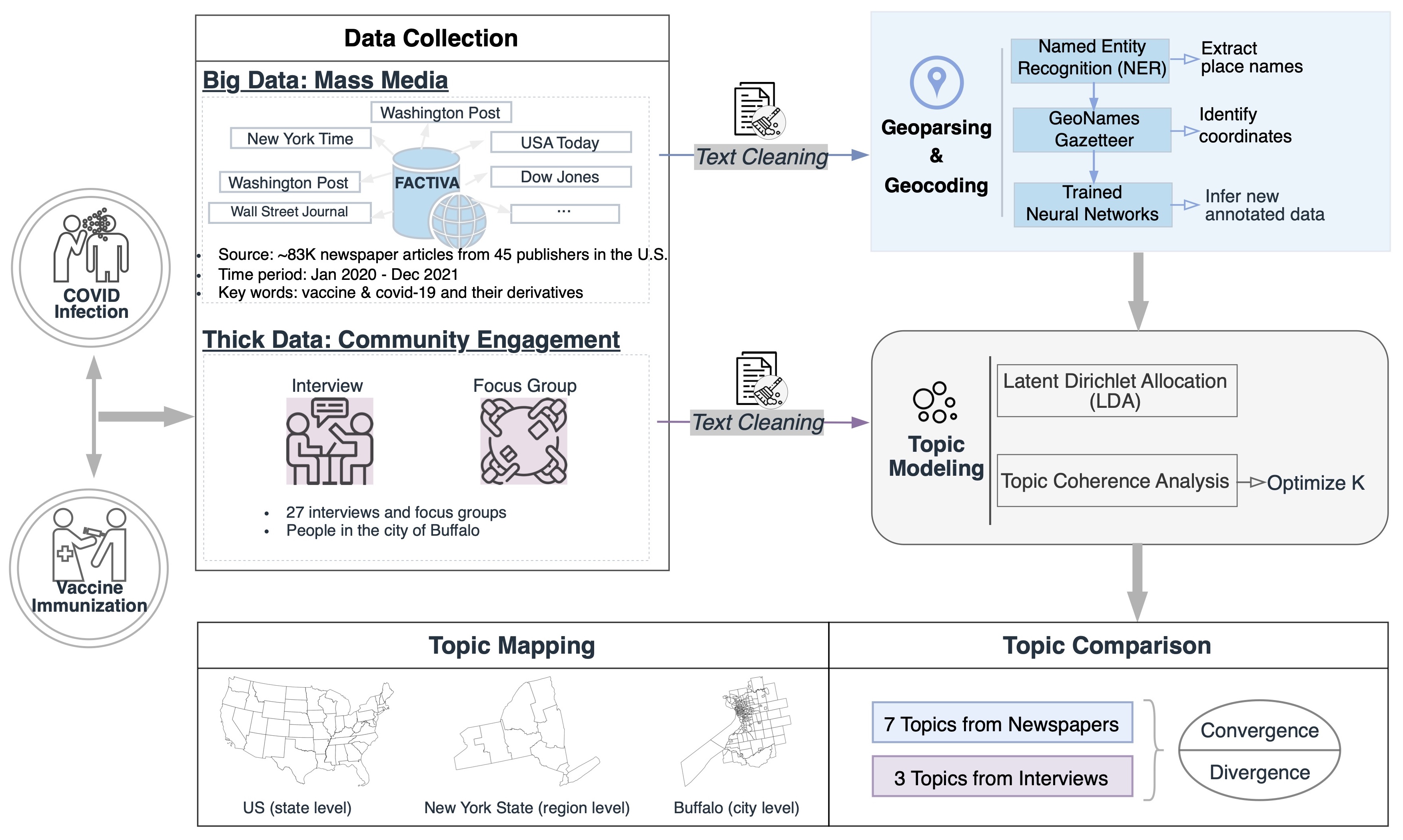COVID-19 topics
A mixed-method analysis of the convergence and divergence of COVID-19 topics in newspapers and interviews
In the face of the unprecedented COVID-19 pandemic, various government-led initiatives and individual actions (e.g., lockdowns, social distancing, and masking) have resulted in diverse pandemic experiences. This study aims to explore these varied experiences to inform more proactive responses for future public health crises. Employing a novel “big-thick” data approach, we analyze and compare key pandemic-related topics that have been disseminated to the public through newspapers with those collected from the public via interviews. Specifically, we utilized 82,533 U.S. newspaper articles from January 2020 to December 2021 and supplemented this “big” dataset with “thick” data from interviews and focus groups for topic modeling. Identified key topics were contextualized, compared and visualized at different scales to reveal areas of convergence and divergence. We found seven key topics from the “big” newspaper dataset, providing a macro-level view that covers public health, policies and economics. Conversely, three topics were derived from the “thick” interview data, offering a micro-level view that focuses more on individuals’ experiences, emotions and concerns. A notable finding is the public’s concern about the reliability of news information, suggesting the need for further investigation on the impacts of mass media in shaping the public’s perception and behavior. Overall, by exploring the convergence and divergence in identified topics, our study offers new insights into the complex impacts of the pandemic and enhances our understanding of key issues both disseminated to and resonating with the public, paving the way for further health communication and policy-making.
